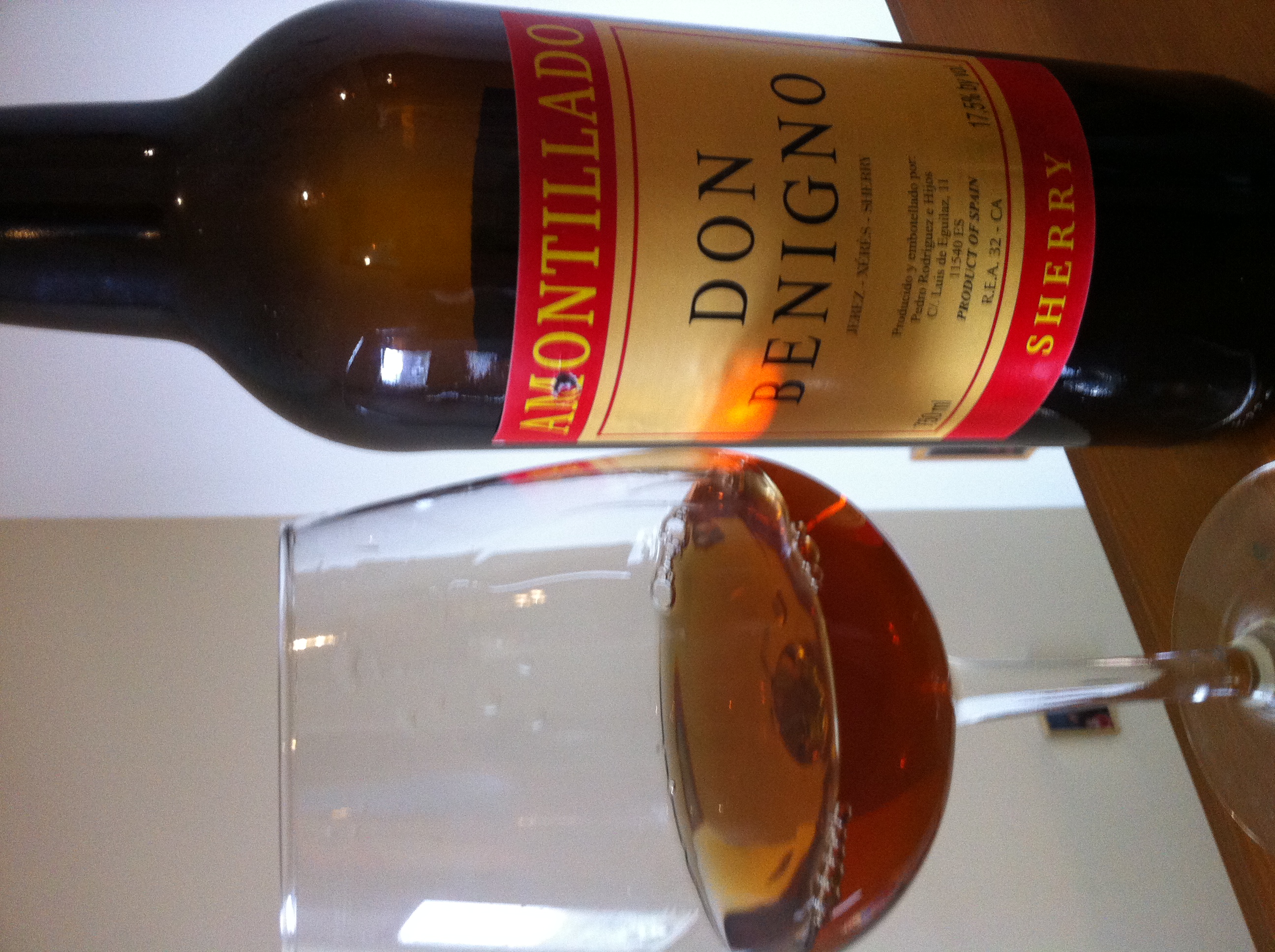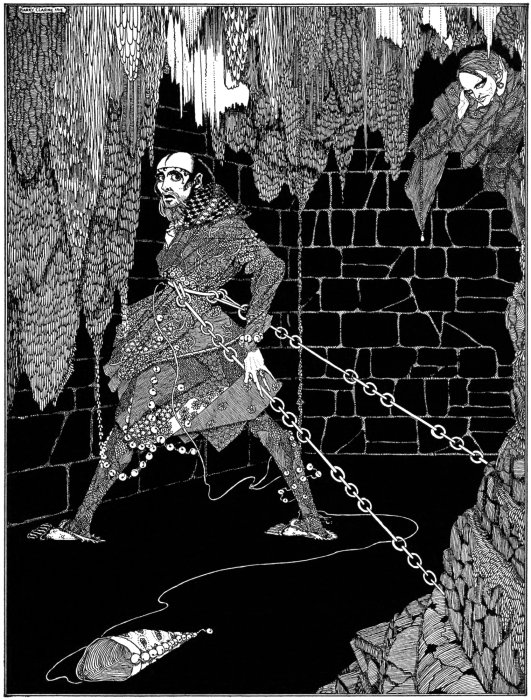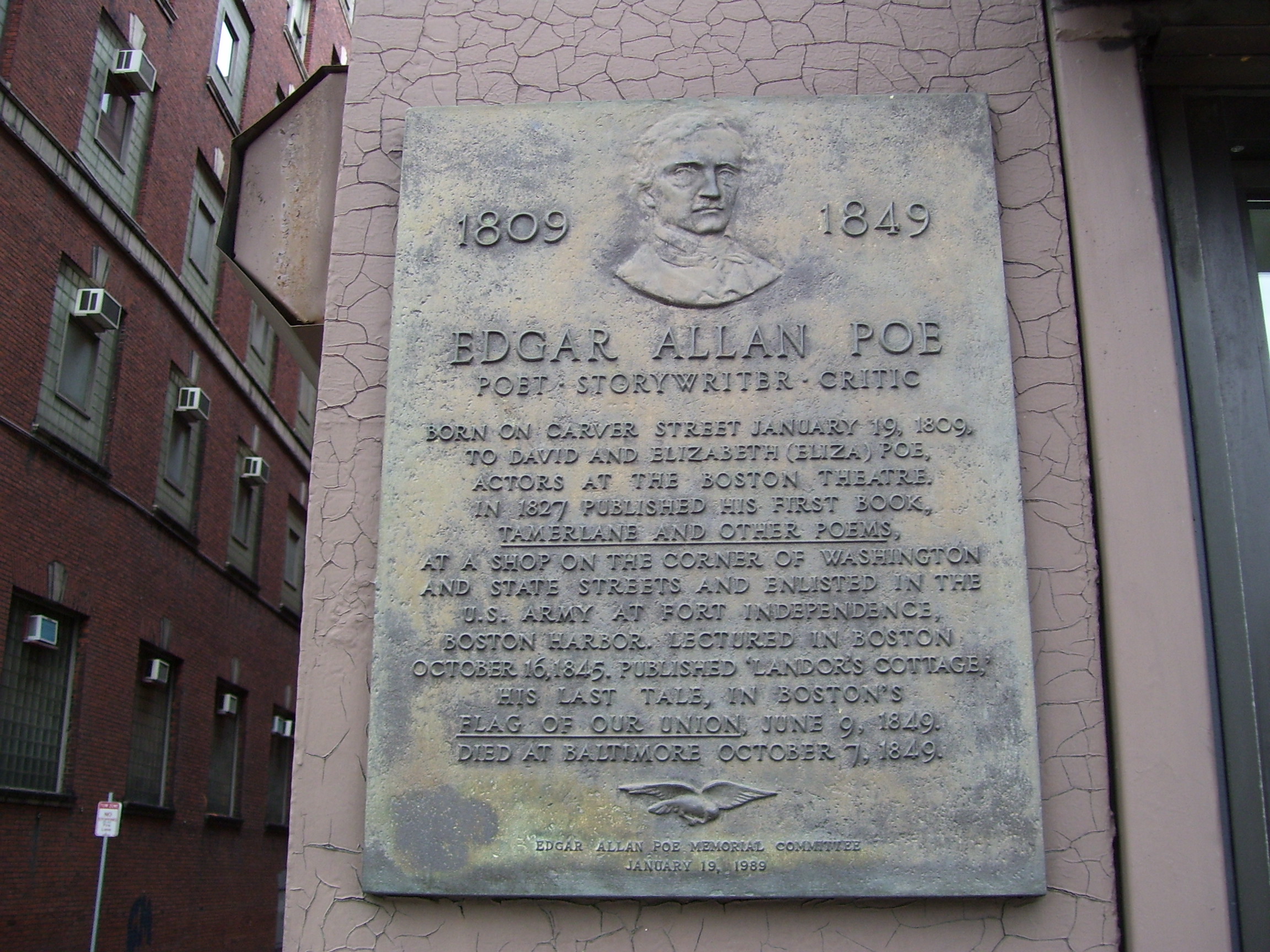|
Amontillado
Amontillado () is a variety of sherry wine characterised by being darker than fino but lighter than oloroso. It is named after the Montilla region of Spain, where the style originated in the 18th century, although the name "Amontillado" is sometimes used commercially as a simple measure of colour to label any sherry lying between a fino and an oloroso. It features prominently in the Edgar Allan Poe short story "The Cask of Amontillado". An Amontillado sherry begins as a fino, fortified to approximately 15.5% alcohol with a cap of flor yeast limiting its exposure to the air. A cask of fino is considered to be amontillado if the layer of flor fails to develop adequately, is intentionally killed by additional fortification, or is allowed to die off through non-replenishment. Without the layer of flor, amontillado must be fortified to approximately 17.5% alcohol so that it does not oxidise too quickly. After the additional fortification, Amontillado oxidises slowly, exposed to oxyg ... [...More Info...] [...Related Items...] OR: [Wikipedia] [Google] [Baidu] |
The Cask Of Amontillado
"The Cask of Amontillado" (sometimes spelled "The Casque of Amontillado" ) is a short story by American writer Edgar Allan Poe, first published in the November 1846 issue of ''Godey's Lady's Book''. The story, set in an unnamed Italy, Italian city at carnival time in an unspecified year, is about a man taking fatal revenge on a friend who, he believes, has insulted him. Like several of Poe's stories, and in keeping with the 19th-century fascination with the subject, the narrative revolves around a person being buried alive – in this case, by immurement. As in "The Black Cat (short story), The Black Cat" and "The Tell-Tale Heart", Poe conveys the story from the murderer's perspective. Montresor invites Fortunato to sample amontillado that he has just purchased without proving its authenticity. Fortunato follows him into the Montresor family vaults, which also serve as catacombs. For unknown reasons, Montresor seeks revenge upon Fortunato and is actually luring him into a trap. At ... [...More Info...] [...Related Items...] OR: [Wikipedia] [Google] [Baidu] |
Amontillado Sherry
Amontillado () is a variety of sherry wine characterised by being darker than fino but lighter than oloroso. It is named after the Montilla region of Spain, where the style originated in the 18th century, although the name "Amontillado" is sometimes used commercially as a simple measure of colour to label any sherry lying between a fino and an oloroso. It features prominently in the Edgar Allan Poe short story "The Cask of Amontillado". An Amontillado sherry begins as a fino, fortified to approximately 15.5% alcohol with a cap of flor yeast limiting its exposure to the air. A cask of fino is considered to be amontillado if the layer of flor fails to develop adequately, is intentionally killed by additional fortification, or is allowed to die off through non-replenishment. Without the layer of flor, amontillado must be fortified to approximately 17.5% alcohol so that it does not oxidise too quickly. After the additional fortification, Amontillado oxidises slowly, exposed to oxyg ... [...More Info...] [...Related Items...] OR: [Wikipedia] [Google] [Baidu] |
Sherry
Sherry ( es, jerez ) is a fortified wine made from white grapes that are grown near the city of Jerez de la Frontera in Andalusia, Spain. Sherry is produced in a variety of styles made primarily from the Palomino grape, ranging from light versions similar to white table wines, such as Manzanilla and fino, to darker and heavier versions that have been allowed to oxidise as they age in barrel, such as Amontillado and oloroso. Sweet dessert wines are also made from Pedro Ximénez or Moscatel grapes, and are sometimes blended with Palomino-based sherries. Under the official name of Jerez-Xérès-Sherry, it is one of Spain's wine regions, a Denominación de Origen Protegida (DOP). The word ''sherry'' is an anglicisation of Xérès (Jerez). Sherry was previously known as '' sack'', from the Spanish ''saca'', meaning "extraction" from the solera. In Europe, "sherry" has protected designation of origin status, and under Spanish law, all wine labelled as "sherry" must legally come fro ... [...More Info...] [...Related Items...] OR: [Wikipedia] [Google] [Baidu] |
Sherry
Sherry ( es, jerez ) is a fortified wine made from white grapes that are grown near the city of Jerez de la Frontera in Andalusia, Spain. Sherry is produced in a variety of styles made primarily from the Palomino grape, ranging from light versions similar to white table wines, such as Manzanilla and fino, to darker and heavier versions that have been allowed to oxidise as they age in barrel, such as Amontillado and oloroso. Sweet dessert wines are also made from Pedro Ximénez or Moscatel grapes, and are sometimes blended with Palomino-based sherries. Under the official name of Jerez-Xérès-Sherry, it is one of Spain's wine regions, a Denominación de Origen Protegida (DOP). The word ''sherry'' is an anglicisation of Xérès (Jerez). Sherry was previously known as '' sack'', from the Spanish ''saca'', meaning "extraction" from the solera. In Europe, "sherry" has protected designation of origin status, and under Spanish law, all wine labelled as "sherry" must legally come fro ... [...More Info...] [...Related Items...] OR: [Wikipedia] [Google] [Baidu] |
Oloroso
Oloroso ("scented" in Spanish) is a variety of fortified wine (sherry) made in Jerez and Montilla-Moriles and produced by oxidative aging. It is normally darker than Amontillado. Oloroso is usually dark and nutty. Unlike the fino and Amontillado sherries, in oloroso the flor yeast is suppressed by fortification at an earlier stage. This causes the finished wine to lack the fresh yeasty taste of the fino sherries. Without the layer of flor, the sherry is exposed to air through the slightly porous walls of the American or Canadian oak casks and undergoes oxidative aging. As the wine ages, it becomes darker and stronger and is often left for many decades. Oloroso sherry is also the base for many of the sweet sherries developed for the international market, such as Bristol Cream, in which oloroso is sweetened and sometimes has the color removed by charcoal filtering to achieve the desired effect. Varieties * Oloroso del Puerto is an oloroso from El Puerto de Santa María. * Manzani ... [...More Info...] [...Related Items...] OR: [Wikipedia] [Google] [Baidu] |
Montilla-Moriles
Montilla-Moriles is a Spanish Denominación de Origen Protegida (DOP) for wines located in the southern part of the province of Córdoba (Andalusia, Spain). It is bounded by the river Genil to the east, by the river Guadajoz to the west, by the river Guadalquivir to the north, and by the Subbetic Range of mountains to the south. This region produces mainly sweet dessert wines using similar techniques to those used for the production of sherry, that is, by ''crianza bajo velo de flor'' (which involves allowing a "veil" of flor yeast to form on the surface of the must in the casks) and ''por el sistema de criaderas y soleras'' (which refers to the process of aging the wine in soleras). Apart from forming a barrier between the wine and the air, the flor also cause certain chemical phenomena in the wine which affect the taste: they consume glycerine (thus conferring a typically dry character to the wine), they significantly reduce the volatile acidity level of the wine, and they ... [...More Info...] [...Related Items...] OR: [Wikipedia] [Google] [Baidu] |
Montilla
Montilla () is a town and municipality of Spain, located in the autonomous community of Andalusia. , the town had a population of 23,209, which makes it the fourth most populated municipality of the Province of Córdoba. It lies 32 miles south of the provincial capital, Córdoba. Food and drink The olive oil of the district is abundant and good, and it is the peculiar flavour of the pale dry light wine of Montilla that gives its name to the sherry known as Amontillado. Montilla is the largest component of the Montilla-Moriles designated wine region. The large wineries Alvear and Gran Barquero are located in Montilla, which has an annual ''vendimia'' (wine-harvest) festival. Cultural heritage Local folkloric figures are the witches "las Camachas", mentioned by Cervantes in the " Dialogue of the Dogs". The central portion of that work is set in a convent which today contains the town hall (in Spanish, ''ayuntamiento''). Notable residents Montilla was the birthplace of "The G ... [...More Info...] [...Related Items...] OR: [Wikipedia] [Google] [Baidu] |
Edgar Allan Poe
Edgar Allan Poe (; Edgar Poe; January 19, 1809 – October 7, 1849) was an American writer, poet, editor, and literary critic. Poe is best known for his poetry and short stories, particularly his tales of mystery and the macabre. He is widely regarded as a central figure of Romanticism in the United States, and of American literature. Poe was one of the country's earliest practitioners of the short story, and considered to be the inventor of the detective fiction genre, as well as a significant contributor to the emerging genre of science fiction. Poe is the first well-known American writer to earn a living through writing alone, resulting in a financially difficult life and career. Poe was born in Boston, the second child of actors David and Elizabeth "Eliza" Poe. His father abandoned the family in 1810, and when his mother died the following year, Poe was taken in by John and Frances Allan of Richmond, Virginia. They never formally adopted him, but he was with them well ... [...More Info...] [...Related Items...] OR: [Wikipedia] [Google] [Baidu] |
Del Duque Amontillado Sherry
Del, or nabla, is an operator used in mathematics (particularly in vector calculus) as a vector differential operator, usually represented by the nabla symbol ∇. When applied to a function defined on a one-dimensional domain, it denotes the standard derivative of the function as defined in calculus. When applied to a ''field'' (a function defined on a multi-dimensional domain), it may denote any one of three operators depending on the way it is applied: the gradient or (locally) steepest slope of a scalar field (or sometimes of a vector field, as in the Navier–Stokes equations); the divergence of a vector field; or the curl (rotation) of a vector field. Strictly speaking, del is not a specific operator, but rather a convenient mathematical notation for those three operators that makes many equations easier to write and remember. The del symbol (or nabla) can be interpreted as a vector of partial derivative operators; and its three possible meanings—gradient, diverg ... [...More Info...] [...Related Items...] OR: [Wikipedia] [Google] [Baidu] |
Alcohol By Volume
Alcohol by volume (abbreviated as ABV, abv, or alc/vol) is a standard measure of how much alcohol (ethanol) is contained in a given volume of an alcoholic beverage (expressed as a volume percent). It is defined as the number of millilitres (mL) of pure ethanol present in of solution at . The number of millilitres of pure ethanol is the mass of the ethanol divided by its density at , which is . The ABV standard is used worldwide. The International Organization of Legal Metrology has tables of density of water–ethanol mixtures at different concentrations and temperatures. In some countries, e.g. France, alcohol by volume is often referred to as degrees Gay-Lussac (after the French chemist Joseph Louis Gay-Lussac), although there is a slight difference since the Gay-Lussac convention uses the International Standard Atmosphere value for temperature, . Volume change Mixing two solutions of alcohol of different strengths usually causes a change in volume. Mixing pure water with a ... [...More Info...] [...Related Items...] OR: [Wikipedia] [Google] [Baidu] |
Ethanol
Ethanol (abbr. EtOH; also called ethyl alcohol, grain alcohol, drinking alcohol, or simply alcohol) is an organic compound. It is an Alcohol (chemistry), alcohol with the chemical formula . Its formula can be also written as or (an ethyl group linked to a hydroxyl group). Ethanol is a Volatility (chemistry), volatile, Combustibility and flammability, flammable, colorless liquid with a characteristic wine-like odor and pungent taste. It is a psychoactive recreational drug, the active ingredient in alcoholic drinks. Ethanol is naturally produced by the fermentation process of Carbohydrate, sugars by yeasts or via Petrochemistry, petrochemical processes such as ethylene hydration. It has medical applications as an antiseptic and disinfectant. It is used as a chemical solvent and in the Chemical synthesis, synthesis of organic compounds, and as a Alcohol fuel, fuel source. Ethanol also can be dehydrated to make ethylene, an important chemical feedstock. As of 2006, world produ ... [...More Info...] [...Related Items...] OR: [Wikipedia] [Google] [Baidu] |





.jpg)


